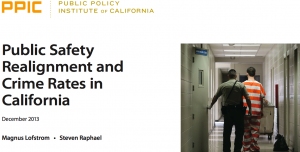Reading the articles, studies, and editorials over the past few month can bring on an attack of schizophrenia. Different news sources review the same studies regarding sentencing and prison reform and come to completely different conclusions. It’s interesting to track the stories as they have played out in the media. What started out last year as widespread over the top endorsements of prison and sentencing reform has morphed into a mixed bag of modest optimism and panicked defeatism.
I think I have an idea of what’s going on. The reforms that are playing out across the country are having some success, but not the extraordinary early success predicted by some. That allows the more reactionary elements (especially those financially tied to existing incarceration models), to redouble their efforts to undermine reform efforts.
The expectation is that releasing an offender into the streets should result in immediate rehabilitation . Well it doesn’t work that way. It takes sustained and systemic effort to get folks to change their ways. Consider, can we really expect those released with no resources, skills, family, jobs and/or education and often without housing or sustenance, to change on their own. It defies logic to expect that, but that is what those attacking sentencing and prison reform are arguing should happen.
In California, in particular, Prison Realignment, the historic reform being implemented, moves less serious offenders out of prison into county jurisdiction (meaning county jail for many). Recently it has come under attack as precipitating a “crime wave”, both in our communities and in our jails.
We’ve heard how jail violence has increased in California and how it must be inextricably linked to the violent offenders held in jail rather than prison. At the same time the critics seem to ignore the fact hat violence in prison is substantially down as well (see: Cal Jails see increased violence since Realignment)
We hear about the latest news reports on those released under realignment from 2011 through 2012 and read how their has been an uptick in California crime which must be the result of realignment. However, if you read the actual report by Magnus Lofstrom and Steven Raphael of the Public Policy Institute of California, “Public Safety Realignment and Crime Rates in California” [click on image on left for PDF], you come away with little reason for panic. It should concern us, that the lack of structured reentry systems in much of California is a problem, and one sufficient to cause reassessment and modification of the existing sentencing systems.
For example, while there is little evidence of any increase in violence there is substantial evidence of a small increase in property crime, in particular car theft. We also know that there are 18,000 fewer offenders in custody (27,000 fewer in prison minus 9,000 additional in our jails). It stands to reason that we need to modify how we deal with the non-violent property offender, including the use of the funds we are saving (by not locking up 18000 prisoners), to provide resources and assistance as well as increased monitoring where appropriate. None of these changes come easy, but there is excellent reason to believe they are slowly working themselves out, if you manage to hold steady in the new year.


